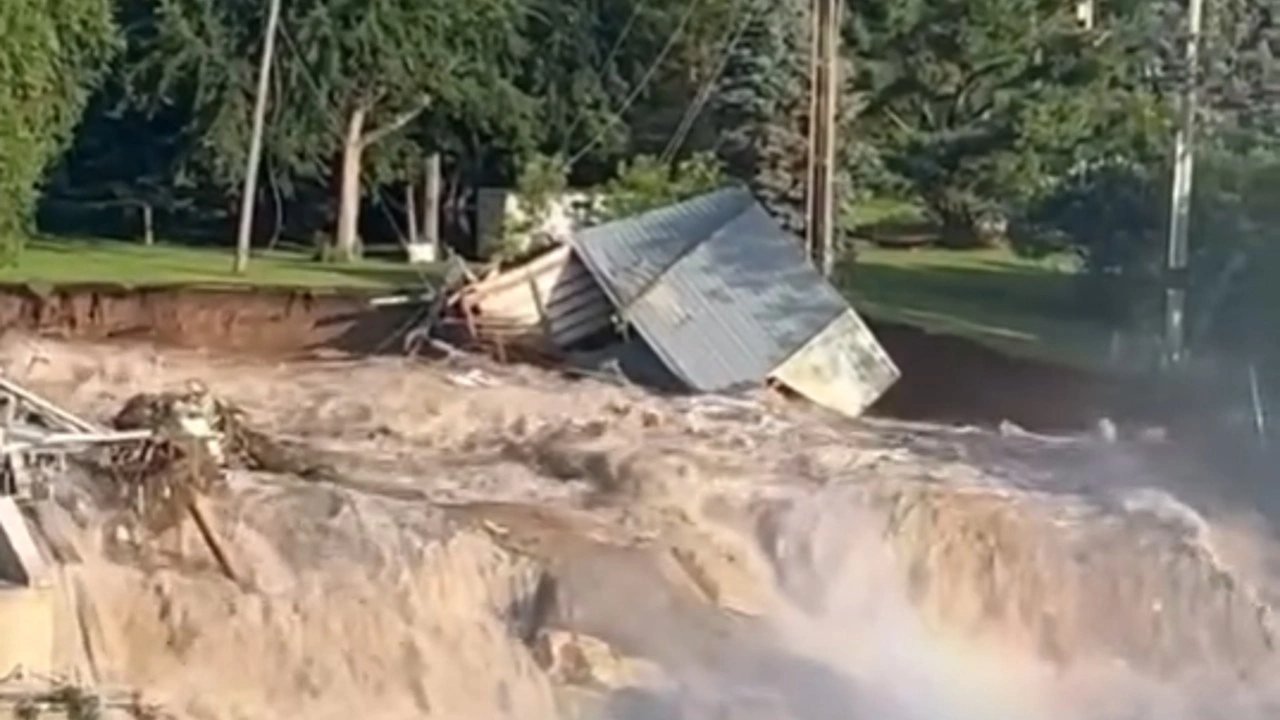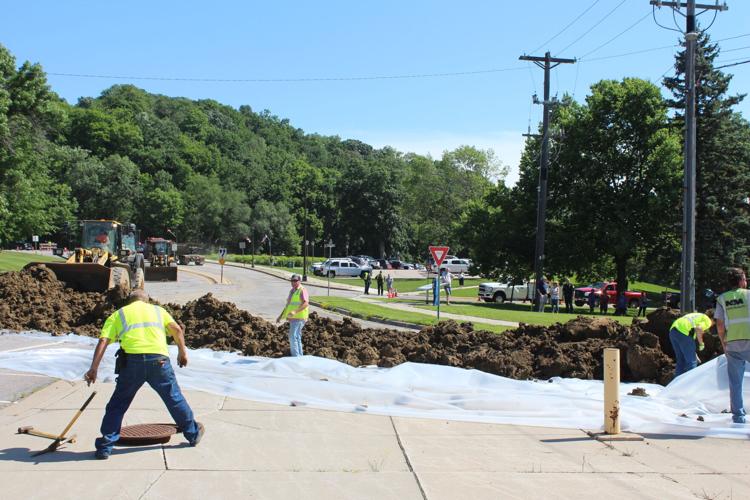Historical Significance

The Mankato Dam failure was a tragic event that occurred on September 9, 1938, resulting in the loss of seven lives and extensive property damage. The dam, located on the Blue Earth River in Mankato, Minnesota, was designed to provide flood control and hydroelectric power generation.
The dam’s construction began in 1920 and was completed in 1922. It was built using a gravity-type design, which relied on the weight of the dam itself to resist the force of the water. The dam was approximately 1,000 feet long and 40 feet high.
Engineering and Geological Factors
The failure of the Mankato Dam was attributed to a combination of engineering and geological factors. The dam’s design was considered inadequate for the size and volume of water it was expected to hold. Additionally, the geological conditions at the site were not fully understood, and the dam’s foundation was not properly prepared.
The dam’s failure occurred during a period of heavy rainfall, which caused the water level in the reservoir to rise rapidly. The water eventually overtopped the dam, causing it to collapse. The collapse of the dam sent a wall of water downstream, destroying homes, businesses, and infrastructure.
Impact and Aftermath: Mankato Dam Failure

The Mankato Dam failure had a devastating impact on the surrounding communities, both in the immediate aftermath and in the long term. The collapse of the dam sent a torrent of water crashing through the town of Mankato, destroying homes, businesses, and infrastructure. The flooding also contaminated the local water supply, making it unsafe to drink or use for other purposes.
In the long term, the dam failure had a number of negative environmental and economic consequences. The flooding destroyed valuable farmland and wildlife habitat, and it also disrupted the local economy. The town of Mankato was forced to rebuild its infrastructure, and many businesses were unable to reopen. The dam failure also had a negative impact on tourism, as visitors were reluctant to come to an area that had been devastated by flooding.
Mitigation Efforts
In the aftermath of the dam failure, a number of efforts were made to mitigate the damage and prevent future failures. The town of Mankato built a new dam to replace the one that had failed, and it also implemented a number of flood control measures. The state of Minnesota also passed a law requiring all dams to be inspected regularly and to meet certain safety standards.
Engineering Analysis

The engineering analysis of the Mankato Dam failure provides valuable insights into the structural integrity of the dam and the potential factors that contributed to its collapse. By comparing the design specifications of the Mankato Dam to similar structures, outlining the potential failure modes and their likelihood, and demonstrating the use of computer simulations to analyze the dam’s structural integrity, engineers can gain a deeper understanding of the dam’s performance and identify areas for improvement in future dam designs.
Design Specifications Comparison, Mankato dam failure
A comparative analysis of the Mankato Dam’s design specifications with similar structures can reveal any discrepancies or deviations from industry standards. This comparison can help identify potential weaknesses or areas where the design may have fallen short of expectations. The table below presents a comparison of key design parameters:
| Parameter | Mankato Dam | Similar Structure A | Similar Structure B |
|---|---|---|---|
| Height | 56 feet | 60 feet | 52 feet |
| Crest Length | 1,050 feet | 1,100 feet | 950 feet |
| Spillway Capacity | 15,000 cubic feet per second | 18,000 cubic feet per second | 14,000 cubic feet per second |
| Foundation Type | Sandstone | Granite | Limestone |
Potential Failure Modes and Likelihood
Outlining the potential failure modes and their likelihood helps engineers prioritize risk mitigation strategies and focus resources on addressing the most critical vulnerabilities. A flowchart can be used to visually represent the potential failure modes and their interdependencies, as well as the likelihood of each mode occurring.
The flowchart for the Mankato Dam could include the following failure modes:
- Overtopping
- Piping
- Foundation failure
- Structural failure
The likelihood of each failure mode can be assessed based on historical data, site-specific conditions, and engineering judgment.
Computer Simulations
Computer simulations are powerful tools for analyzing the structural integrity of dams. By simulating different loading conditions and environmental factors, engineers can assess the dam’s performance under various scenarios and identify potential weaknesses. Finite element analysis (FEA) is a commonly used technique for simulating the behavior of complex structures like dams.
FEA simulations can provide insights into:
- Stress distribution within the dam
- Deformation patterns
- Failure mechanisms
The results of these simulations can be used to refine the dam’s design, optimize maintenance strategies, and develop emergency response plans.